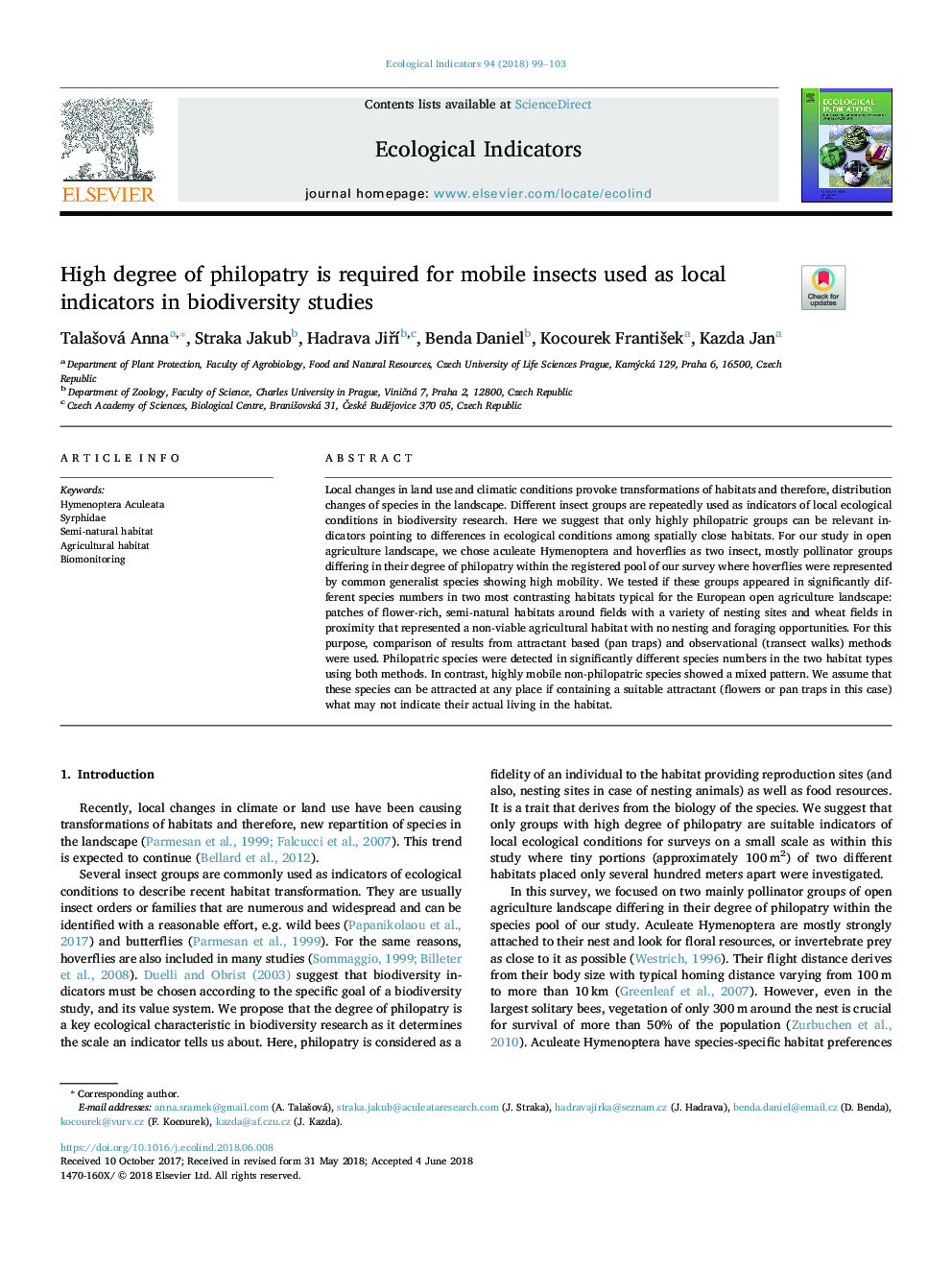| کد مقاله | کد نشریه | سال انتشار | مقاله انگلیسی | نسخه تمام متن |
|---|---|---|---|---|
| 8845001 | 1617108 | 2018 | 5 صفحه PDF | دانلود رایگان |
عنوان انگلیسی مقاله ISI
High degree of philopatry is required for mobile insects used as local indicators in biodiversity studies
ترجمه فارسی عنوان
درجه بالای فیلپاتری برای حشرات همراه که به عنوان شاخص های محلی در مطالعات تنوع زیستی مورد استفاده قرار می گیرد
دانلود مقاله + سفارش ترجمه
دانلود مقاله ISI انگلیسی
رایگان برای ایرانیان
کلمات کلیدی
موضوعات مرتبط
علوم زیستی و بیوفناوری
علوم کشاورزی و بیولوژیک
بوم شناسی، تکامل، رفتار و سامانه شناسی
چکیده انگلیسی
Local changes in land use and climatic conditions provoke transformations of habitats and therefore, distribution changes of species in the landscape. Different insect groups are repeatedly used as indicators of local ecological conditions in biodiversity research. Here we suggest that only highly philopatric groups can be relevant indicators pointing to differences in ecological conditions among spatially close habitats. For our study in open agriculture landscape, we chose aculeate Hymenoptera and hoverflies as two insect, mostly pollinator groups differing in their degree of philopatry within the registered pool of our survey where hoverflies were represented by common generalist species showing high mobility. We tested if these groups appeared in significantly different species numbers in two most contrasting habitats typical for the European open agriculture landscape: patches of flower-rich, semi-natural habitats around fields with a variety of nesting sites and wheat fields in proximity that represented a non-viable agricultural habitat with no nesting and foraging opportunities. For this purpose, comparison of results from attractant based (pan traps) and observational (transect walks) methods were used. Philopatric species were detected in significantly different species numbers in the two habitat types using both methods. In contrast, highly mobile non-philopatric species showed a mixed pattern. We assume that these species can be attracted at any place if containing a suitable attractant (flowers or pan traps in this case) what may not indicate their actual living in the habitat.
ناشر
Database: Elsevier - ScienceDirect (ساینس دایرکت)
Journal: Ecological Indicators - Volume 94, Part 1, November 2018, Pages 99-103
Journal: Ecological Indicators - Volume 94, Part 1, November 2018, Pages 99-103
نویسندگان
TalaÅ¡ová Anna, Straka Jakub, Hadrava JiÅÃ, Benda Daniel, Kocourek FrantiÅ¡ek, Kazda Jan,
